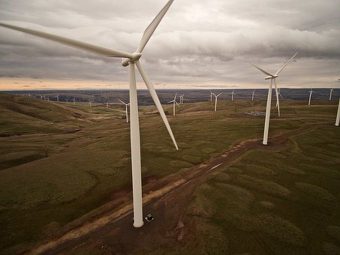
Upgrading the UK’s existing onshore wind farms as they reach the end of their operational lives would provide a highly cost-effective way to boost cheap, low carbon electricity generation for years to come, a new analysis today by think tank ECIU concludes.
In England, Wales, and Scotland owners of more than 750 turbines across nearly 60 sites that were installed around the turn of the millennium will face a decision when these wind farms reach the end of their scheduled operation in the next five years, the report points out.
But the Energy and Climate Intelligence Unit (ECIU) argues that rather than dismantling such sites or extending their lease and planning consent to keep them in operation as before, onshore wind farm owners should seek to ‘repower’ their sites to the latest and most efficient equipment.
Upgrading these wind farms could increase the UK’s generating capacity by more than 1.3GW compared to shutting them down, the analysis found, yielding enough power to meet the needs of almost 800,000 homes.
Moreover, it estimates that repowering these turbines could save consumers more than £77m a year on their bills while also helping the UK towards meeting its legally binding climate change targets.
Report author, ECIU energy analyst Dr Jonathan Marshall, said electricity from upgraded, more efficient onshore wind farms would be “significantly cheaper” than that from existing, older turbines.
Unlike the earliest wind farms installed in the early 1990s when the technology was in its infancy, the renewables industry has developed significantly so that modern wind farms are now cost competitive with fossil fuel power stations, he explained.
“It makes sense to repower sites of the earliest wind farms, which tend to be in locations that have the best wind resource,” said Marshall. “Existing infrastructure including network connections can also be reused or upgraded at costs lower than for new sites.”
The findings were welcomed by industry groups. Manufacturing organisation EEF said the option for repowering onshore wind farms “should be on the table” as a means of reducing industrial energy costs.
Meanwhile, RenewableUK executive director Emma Pinchbeck called for new and repowered onshore projects to be able to compete for clean power contracts, which she said would enable them to generate “low cost, subsidy-free electricity”.
The findings come as forecasts suggest global wind power capacity could double by 2027 due to the growing offshore sector and increasing demand for renewable energy in emerging markets.
Renewable energy consultancy MAKE’s latest wind market outlook report estimates global wind power capacity additions could average more than 65GW each year over the coming decade, resulting in an annual growth rate of around four per cent through to 2027.
However, success over the next 10 years will depend on the global wind power industry’s ability to continue securing contracts at competitive auctions and delivering awarded capacity on time and within budget, the analysis noted.
“The precipitous drop in pricing globally over the last year, particularly in the offshore sector, is certainly a rallying point for industry achievement, but it needs to be proven,” MAKE said.
In related newds, there was further record-breaking news for the European wind energy industry this week, with Spain generating enough power from its turbines to meet almost half – 49 per cent – of its electricity needs on Saturday.
According to trade body WindEurope, Spain generated 343GWh of electricity from wind turbines that day, a marking a new record for the country.
Source: businessgreen.com

